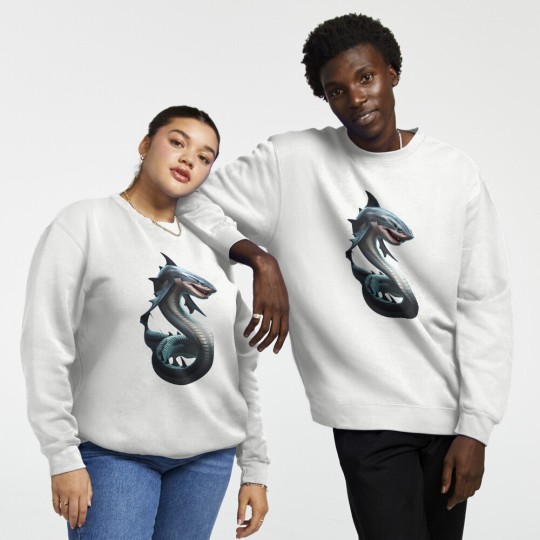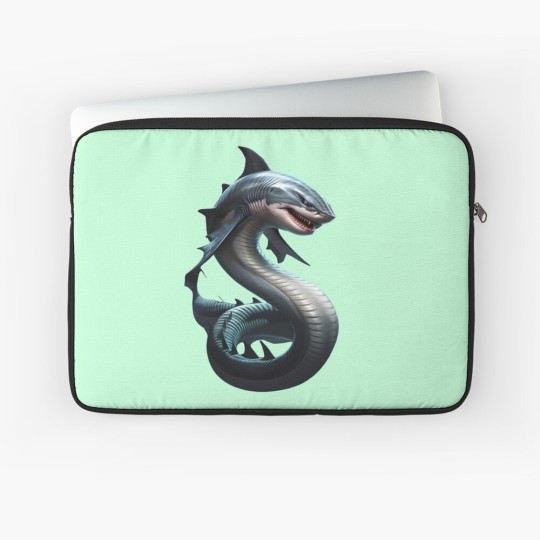#deepseapredator
Explore tagged Tumblr posts
Text
Serpent Shark: A Mythical Creature of Speed and Terror"

#shark#serpent#hybridcreature#deepseapredator#mythicalcreature#marineart#fantasyart#aquaticmonster#underwaterbeast#sharks#serpents#fantasydesign#mythicalmonster#horrorart#uniqueartwork#boldart#creepyart#oceanart#sharkserpent#artcollector#artlovers#etsyshop#redbubbleart#etsyfinds#redbubble#artprints#homeartdecor#etsyartist#redbubbleartist#uniquegifts
5 notes
·
View notes
Link
🦑 The colossal squid is one of the largest and most mysterious creatures in the world. With eyes the size of basketballs and tentacles that can reach up to 10 meters long, this deep-sea predator is a true marvel of nature. 🐟 But what does the colossal squid eat? Scientists have been studying the feeding habits of this elusive creature for years, and their findings are fascinating. From deep-sea fish to other squid, the colossal squid is a formidable predator that can take down prey much larger than itself. 🦐 In this article, we'll explore the feeding habits of the colossal squid in detail. We'll look at what it eats, how it hunts, and how it uses its unique adaptations to survive in the harsh environment of the deep sea. So buckle up and get ready to dive into the world of the colossal squid!1. The Anatomy of a Colossal Squid's Beak: A Formidable Feeding ToolThe colossal squid's beak is a powerful tool used for feeding. It's made of chitin, a tough material found in the exoskeletons of arthropods. The beak is the only hard part of the squid's body, making it a formidable weapon against prey. It's shaped like a parrot's beak and can be up to 2 meters long. The beak is attached to the squid's arms, which are covered in suckers used for grasping prey. The beak has three parts: the rostrum, the mandibles, and the buccal mass. The rostrum is the pointed tip of the beak, used for piercing and tearing prey. The mandibles are the two curved arms of the beak, used for cutting and slicing prey. The buccal mass is the fleshy part of the beak, used for crushing and grinding prey. The beak is so strong that it can cut through bone and even metal. Scientists have studied the beak to learn more about the colossal squid's diet and behavior. The beak is also used to identify the species of squid, as each species has a unique beak shape. The beak is a fascinating example of the incredible adaptations found in the animal kingdom. 🦑🔪💪2. The Diet of a Colossal Squid: An Analysis of Stomach ContentsResearchers have analyzed the stomach contents of colossal squids to understand their diet. They found that the colossal squid eats a variety of prey, including fish, squid, and crustaceans. Some of the prey species were previously unknown to be part of the colossal squid's diet. The squid's diet varies depending on its location and the availability of prey. The analysis also revealed that the colossal squid's beak is capable of crushing hard-shelled prey. It has been suggested that the squid's beak may be used to crush the shells of deep-sea creatures. This adaptation allows the squid to access a wider range of prey, increasing its chances of survival. The study of the colossal squid's diet provides insight into the ecology of the deep sea. It also highlights the importance of understanding the feeding habits of top predators in the ecosystem. Further research is needed to fully understand the role of the colossal squid in the deep-sea food web. 🦑🔬🐟🦐🌊3. Hunting Strategies of the Colossal Squid: Stealth and Ambush TechniquesColossal squids are elusive creatures that use stealth and ambush tactics to catch prey. They have several hunting strategies that make them efficient predators in the deep sea. 🔍 Stealth is one of the primary hunting strategies of the colossal squid. They use their large eyes to detect prey and remain hidden in the darkness. They also have the ability to change their skin color to blend in with their surroundings. 🐟 Ambush is another technique used by the colossal squid. They wait patiently for their prey to come close and then strike with their powerful tentacles. They can also use their beak to crush their prey. 💪 The colossal squid has a muscular mantle that helps it move quickly and catch prey. They can swim up to 24 kilometers per hour and use their tentacles to grab their prey. They can also use their arms to hold onto their prey while they eat. 🌊 The deep sea is a harsh environment, and the colossal squid has adapted to survive. They have large eyes to see in the darkness, and they can also detect prey using their sense of smell. They are also capable of surviving in extreme temperatures and pressures. 🦑 In conclusion, the colossal squid is a formidable predator that uses stealth and ambush tactics to catch its prey. Its adaptations to the deep sea make it a fascinating creature to study.4. The Role of Bioluminescence in Colossal Squid Feeding BehaviorBioluminescence plays a crucial role in the feeding behavior of the colossal squid. The squid uses its bioluminescent organs to attract prey and confuse predators. The squid's eyes are also adapted to detect bioluminescence, allowing it to locate its prey in the dark depths of the ocean. The squid's tentacles are covered in small light-producing organs called photophores, which it uses to lure prey closer. Once the prey is close enough, the squid uses its sharp beak to tear it apart. The bioluminescent glow also helps the squid to see its prey and avoid obstacles while hunting. Overall, the use of bioluminescence in feeding behavior is a fascinating adaptation that allows the colossal squid to survive in the harsh, dark environment of the deep ocean. 🦑🌊5. Feeding Ecology of the Colossal Squid: Implications for Marine Food Webs🦑 The colossal squid is a top predator in the deep ocean, feeding on a variety of prey including fish, squid, and even other colossal squid. 🐟 Its feeding habits have important implications for the marine food web, as it helps to regulate the populations of its prey species. 🦐 The colossal squid has a unique feeding mechanism, using its tentacles to capture prey and bring it to its beak-like mouth. 🦀 It is also able to swallow prey whole, thanks to its highly expandable stomach. 🌊 Understanding the feeding ecology of the colossal squid is important for conservation efforts and for maintaining the balance of the marine ecosystem.6. The Impact of Climate Change on Colossal Squid Feeding Habits and DistributionClimate change is affecting the feeding habits and distribution of colossal squid. Rising ocean temperatures affect the squid's prey, causing changes in their diet. Changes in ocean currents and sea ice affect their migration patterns. Increased carbon dioxide levels in the ocean can affect their behavior. These changes can impact the entire ecosystem and food chain. Other marine animals may also be affected by changes in the squid's diet and distribution. Changing migration patterns can affect the distribution of nutrients in the ocean. Understanding the impact of climate change on colossal squid is crucial for conservation efforts. Conservation efforts can help protect the squid and their ecosystem. Reducing carbon emissions can help mitigate the effects of climate change. Research can help us better understand the impact of climate change on marine life. It's important to take action to protect the ocean and its inhabitants. 🌊🦑 In conclusion, the colossal squid has a unique feeding strategy that allows it to capture prey with ease. Its sharp beak and rotating hooks make it a formidable predator in the deep ocean. 🦑🦷 Despite its massive size, the colossal squid has a relatively small esophagus, which limits the size of prey it can consume. It primarily feeds on fish and other squid species, but has been known to consume larger animals such as toothfish and even smaller whales. 🐟🐋 Further research is needed to fully understand the feeding habits of the colossal squid. However, its ability to adapt and thrive in the harsh conditions of the deep ocean is a testament to its impressive hunting skills. 🌊👀 https://fastdiet.net/colossal-squid-feeding-habits/?_unique_id=647410a3279fa
#Uncategorised#cephalopodmollusks#colossalsquiddiet#deepseapredators#giantsquidanatomy#marinebiologyresearch
0 notes
Text
Serpent Shark: A Mythical Creature of Speed and Terror"

#shark#serpent#hybridcreature#deepseapredator#mythicalcreature#marineart#fantasyart#aquaticmonster#underwaterbeast#sharks#serpents#fantasydesign#mythicalmonster#horrorart#uniqueartwork#boldart#creepyart#oceanart#sharkserpent#artcollector#artlovers#etsyshop#redbubbleart#etsyfinds#redbubble#artprints#homeartdecor#etsyartist#redbubbleartist#uniquegifts
2 notes
·
View notes
Text
Serpent Shark: A Mythical Creature of Speed and Terror"

#shark#serpent#hybridcreature#deepseapredator#mythicalcreature#marineart#fantasyart#aquaticmonster#underwaterbeast#sharks#serpents#fantasydesign#mythicalmonster#horrorart#uniqueartwork#boldart#creepyart#oceanart#sharkserpent#artcollector#artlovers#etsyshop#redbubbleart#etsyfinds#redbubble#artprints#homeartdecor#etsyartist#redbubbleartist#uniquegifts
1 note
·
View note